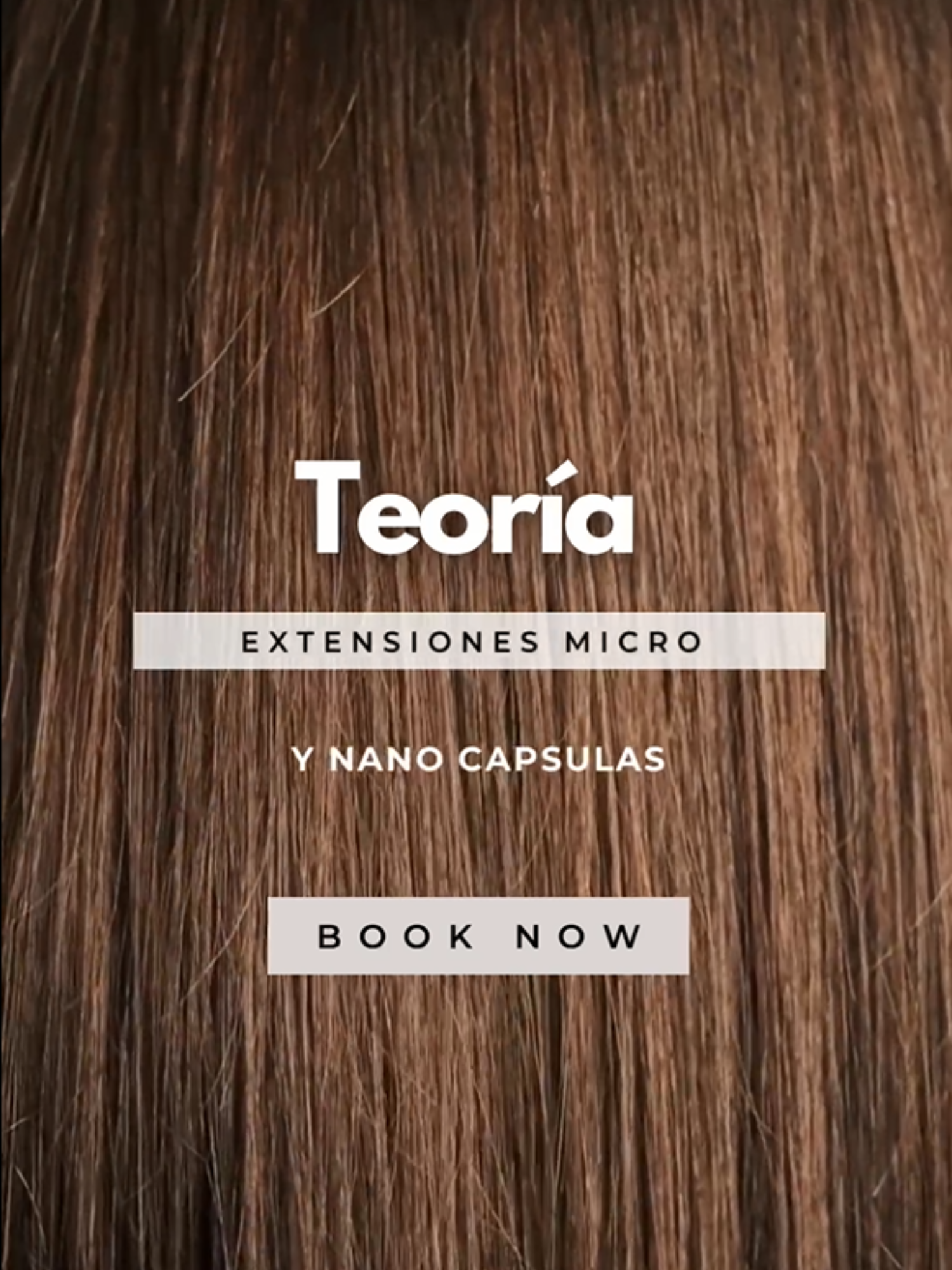
Theory
Hair extension with the hot method of micro and nano capsules is a professional technique that involves attaching natural hair strands to the client’s hair using keratin as an adhesive. This technique is characterized by its discretion, durability, and natural appearance.
1. Principle of the Method
The hot method involves using a special thermal clamp that heats the keratin, allowing it to melt and firmly adhere to the natural hair. The capsules (keratin) are extremely small:
- Micro capsules: 3 to 4 mm in diameter.
- Nano capsules: even smaller, 1 to 2 mm.
These capsules are practically invisible, making the method ideal even for people with fine hair.
2. Necessary Materials
- Natural hair strands with preformed keratin capsules (micro or nano).
- Thermal clamps (special flat iron for extensions).
- Sectioning comb.
- Clips to separate hair.
- Protective gloves.
- Special brush for extensions.
3. Step-by-Step Procedure
- Hair Preparation: Wash the hair with a clarifying shampoo without conditioner. Dry completely.
- Sectioning the Hair: Divide the hair into orderly sections, starting from the lower part of the head.
- Applying the Strand: Take a small strand of natural hair. Place the strand with the keratin capsule near the root of the hair (a few millimeters from the scalp).
- Melting the Capsule: Use the thermal clamp at 220 degrees to heat the capsule for a few seconds until the keratin melts.
- Forming the Junction: Quickly mold the keratin with your fingers, forming a firm, round, and discreet capsule.
- Repetition: Repeat the process all over the head, respecting the hair growth direction and ensuring an even distribution.
4. Aftercare
- Do not wash the hair in the first 48 hours.
- Use sulfate-free and oil-free products at the roots.
- Carefully brush the hair with a special brush.
- Avoid direct heat on the junctions (very hot irons or hair dryers).
- Keep hair tied up while sleeping.
5. Duration and Maintenance
Extensions with micro and nano capsules can last from 2 to 4 months, depending on hair growth and care. Afterwards, maintenance or replenishment is necessary.
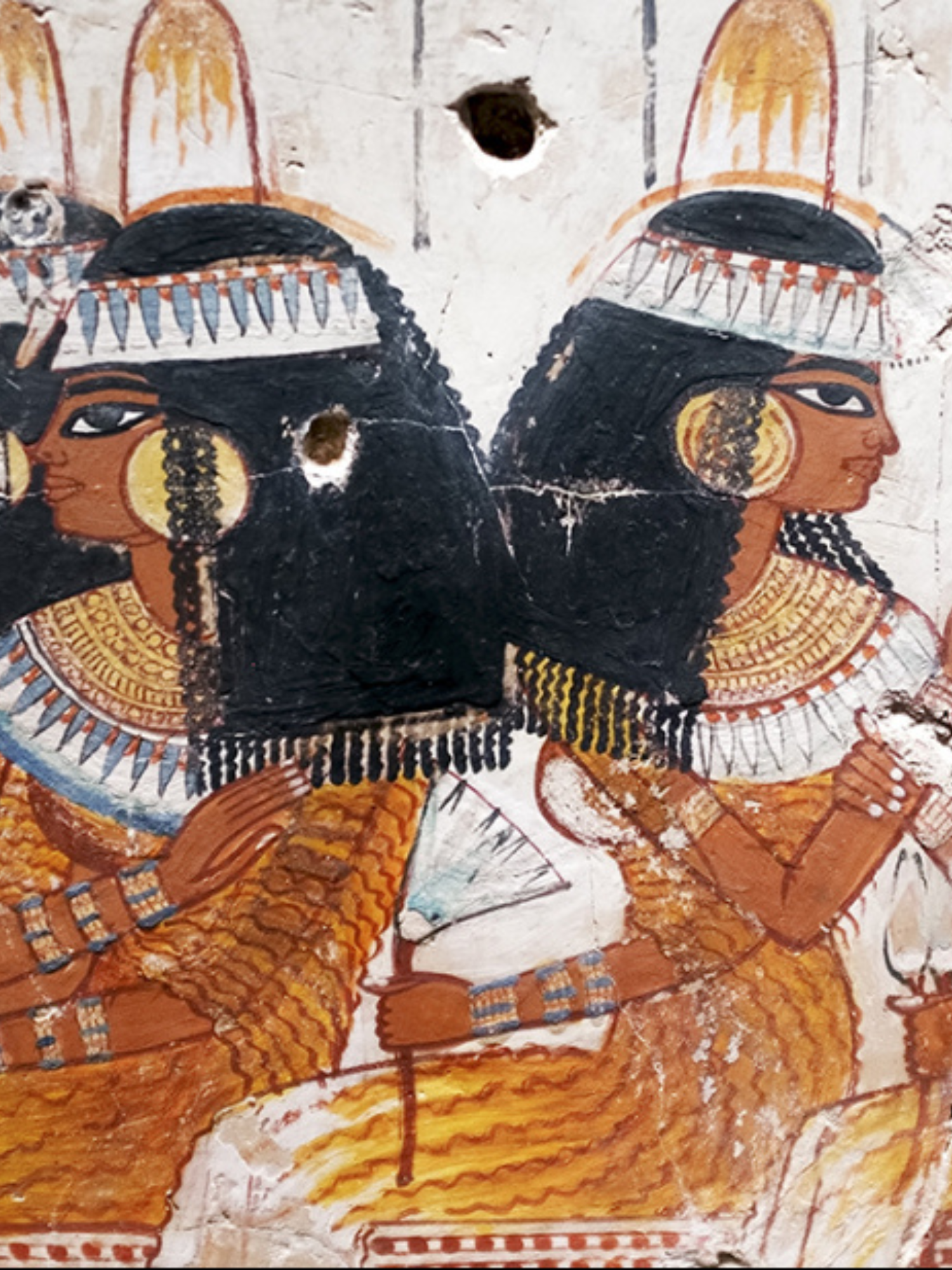
A Bit of History
Historical Origins of Hair Extensions
1. Ancient Egypt (around 3400 B.C.)
- The Egyptians were pioneers in the use of extensions.
- Both men and women wore wigs and extensions made of human hair, wool, or plant fibers.
- They were dyed with henna and secured with resins or beeswax.
- They were symbols of social status, beauty, and cleanliness.
2. Ancient Rome and Greece
- Roman women used wigs and false braids, especially with blonde hair imported from Northern Europe.
- Greek women preferred elaborate hairstyles with added hair.
- Extensions were a sign of elegance and sophistication.
3. 17th to 19th Centuries in Europe
- During the Renaissance and Baroque periods, wigs became popular among the aristocracy.
- In France and England, wigs and added ponytails were used to increase volume.
- The use was more common among men until it became primarily female in the 19th century.
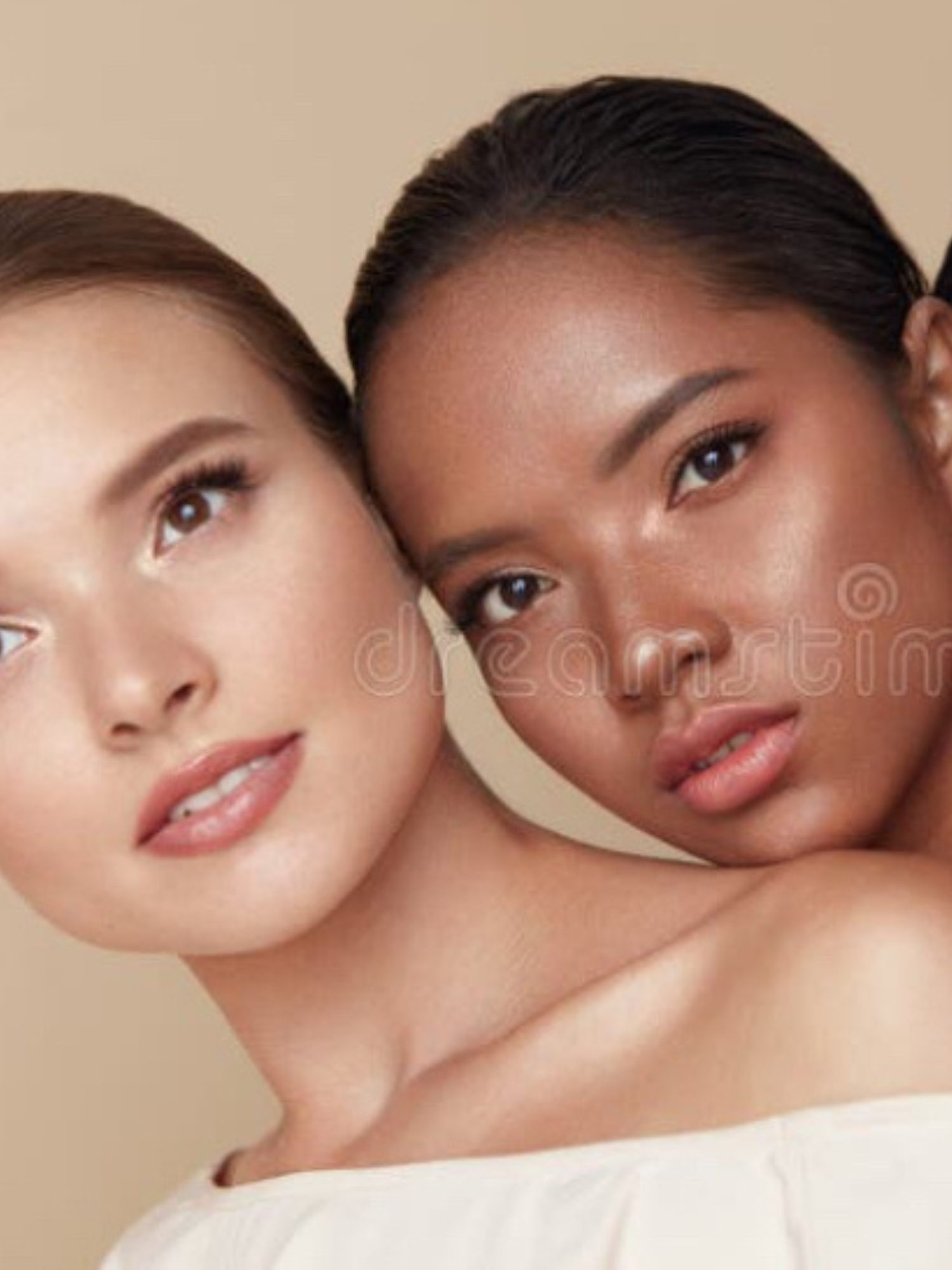
Origin of Extensions
The origin of extensions can be Asian, Vietnamese, Indian, Brazilian, European, Afro, South American, Turkish, Slavic, China.
-
Turkish.
Natural texture: Turkish hair is fine and soft, with a natural wave that facilitates its integration with various hair types.
Durability: Being real human hair, these extensions are more resistant and can last several months with proper care.
Versatility: Available in multiple colors and textures, they easily adapt to different styles and preferences.
-
Afro
Texture: Defined and elastic curls.
Ideal for: Those seeking a voluminous and natural look.
-
European
Characteristics: Fine and soft or frizzy and thick texture. Variety of colors.
Advantages: Blends easily with light and dark-toned hair, easy to style.
Considerations: More delicate and may require proper care.
-
Brazilian
Characteristics: Thick texture with natural waves or curls. Also available in straight hair. High shine.
Advantages: Adds volume and is ideal for styles with body.
Considerations: Can be heavier, which might be uncomfortable in warm climates.
-
Asian
These are extensions of Chinese and Vietnamese origin.
-
Vietnamese
Texture: Can be straight, wavy, or slightly curly.
Natural color: Deep black or dark brown.
Characteristics:
Less processed than Chinese.
Common use: Excellent for natural styles, for those seeking premium quality and durability.
-
China
Characteristics: Fine and straight texture, generally dark in color.
Advantages: High durability and heat resistance.
Considerations: Can be rougher and less flexible for certain styles.
-
Indian
Characteristics: Soft and silky texture, with natural waves. Also available in straight hair.
Advantages: Versatility in hairstyles and good integration with different hair types.
Considerations: Requires proper care to maintain quality.
-
Slavic
Origin: Mainly from Eastern Europe, especially Russia and Ukraine.
Texture: Fine, soft, and silky, with a natural shine.
Natural colors: Ranges from light blond to medium brown, reducing the need for chemical treatments.
Durability: With proper care, can last between 12 and 24 months.
-
Child Hair
Can belong to any origin.
The structure of children’s hair is an exclusive special type of hair.
The structure of children’s hair is a great material obtained from children under 12 years old. They have a natural shine. With stable care and nutrition, the usage period is unlimited, while volume and length are satisfied. The price of such hair is high due to the exclusivity and quality of the hair.
-
Virgin Hair
Can be from a single donor (very high price) or from multiple people. Hair that was never treated with chemicals or dyes.
Virgin hair can be from any origin, with different structures and colors.
Each type of hair has its own characteristics that make it suitable for different styles and needs. When choosing extensions, it is important to consider the texture, color, and required maintenance to ensure a natural and lasting integration with your hair.

Instruments
In-person course on nano capsule extensions.
Tool kit.
- Hot clamps (placement of extensions)
- Wide hot clamps (encapsulating extensions)
- Mannequin head for practice.
- Thermal silicone mat.
- Professional scissors.
- Karda.
- Pliers for removal and encasement.
- Clips.
- Discs.
- Remover.
- Natural hair extensions to practice on mannequin.
- Natural hair extensions to practice on a real model.
- Transparent and colored keratin.

Hair Structure
Hair Structure
Knowledge is power, so the deeper you understand the structure of the hair, the more resources you will have. Today we take paper, pencil, and notebook to take notes on this masterclass about hair.
What is the structure of hair?
The first step to understanding hair structure is to delve into the hair fiber, which is nothing more than a cylindrical filament made of keratin that originates and grows in the scalp. This filament is composed of proteins, lipids, trace elements, water, and pigments, and its function is to protect us from external aggressions. That’s why they are distributed all over the body, except for the palms of the hands and feet, although on the head is where they grow in greater size and abundance.
Regarding the structure of hair, we can divide it into the following parts:
• Dermal Papilla: Formed by dermal cells and blood vessels full of nutrients, it is located at the base of the hair bulb and its mission is to transport the necessary food and oxygen from the blood to the hair for its growth and structure.
• Hair Bulb: It is the most vascularized area and the production center of hair, where mitosis and pigmentation occur. The bulb also provides the necessary nutrients for the hair to grow strong and healthy.
• Root: The root begins in the hair follicle. It can be found in the skin of the scalp. This area houses the sebaceous glands in addition to the dermal papilla that is responsible for supplying nutrients from the blood to the hair.
• Sebaceous Gland: It is responsible for keeping the hair lubricated and preventing dryness, but an excess of sebum can cause your hair to look oily.
• Hair Shaft: This is where we see the growth of the hair and can determine the structure of the hair and the stage of its life cycle.
What Do We Find in the Internal Structure of Hair?
If we could see a hair shaft cut under a microscope, we could differentiate, in turn, three parts: the medulla, the cortex, and the cuticle. This is what we call the internal capillary structure.
• Medulla: Located in the core of the hair, formed by soft keratin cells bonded together.
• Cortex: Contains melanin that is visible through the transparent cuticle. The cortex contains fibrous substances made of keratin and provides the shape and elasticity of the hair. For the connections between keratin and the fibers to be established, it is essential that water or other moisturizing agents pass through the cuticle to the cortex. This determines its elasticity and resistance.
• Cuticle: Formed by layers of hard keratin with a tile-like or scale-like appearance, it is the outer layer of the hair that protects the capillary fiber.
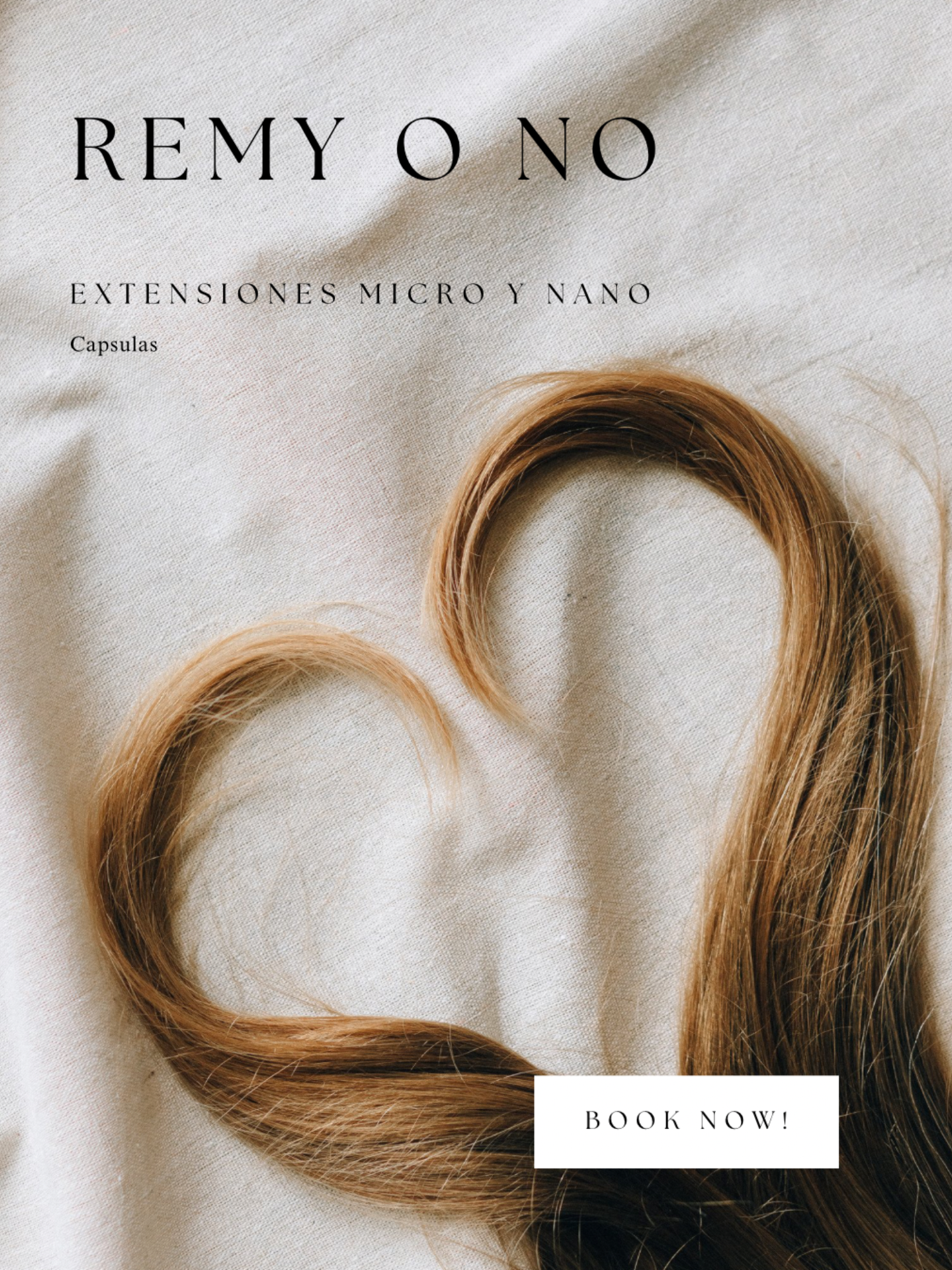
Types of Extensions
Today, there is a wide variety of extensions.
First of all, I want to say that I never work with synthetic hair. Because the technique I am working with is permanent and synthetic hair can cause allergies or all extensions may fall out when the client washes their hair at home for the first time.
When we go to the extensions market, we will find the term Remy Hair when choosing hair.
Remy extensions are natural hair that is arranged with the cuticles facing the same direction. The price of the hair is higher than non-Remy extensions.
Non-Remy extensions are natural hair that is arranged and mixed with cuticles facing different directions. They tangle a lot. They lose their good appearance when washed for the first time. They are usually very cheap hair.
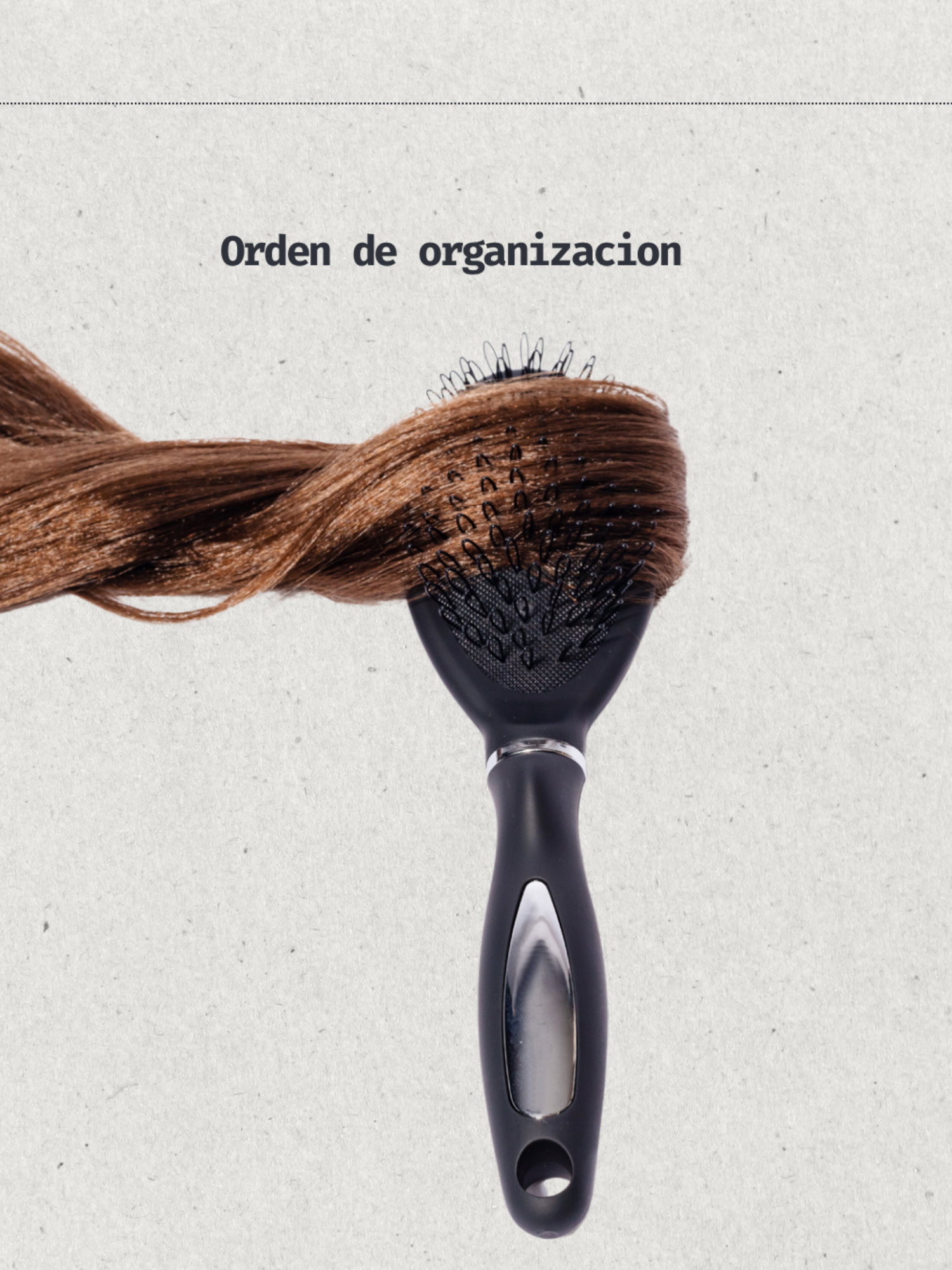
Nano Capsule Extensions
To perform nano micro capsule extension placement, you must start with the preparation of extensions.
1. You need to analyze the hair of the person who wants to have micro or nano capsule extensions placed.
2. – if the hair is straight or wavy.
– if it is frizzy
– if it is fine or thick
3. Choose the quantity and length of extensions.
4. Encapsulate extensions.
- Micro capsule is a larger size capsule.
- Nano capsule is a double capsule smaller in size than micro.
- Depending on the thickness of the own hair, we choose the most suitable capsule.
- Micro capsule for thicker hair. Nano capsule for finer hair or if you want the capsule to be less visible all over the head.





